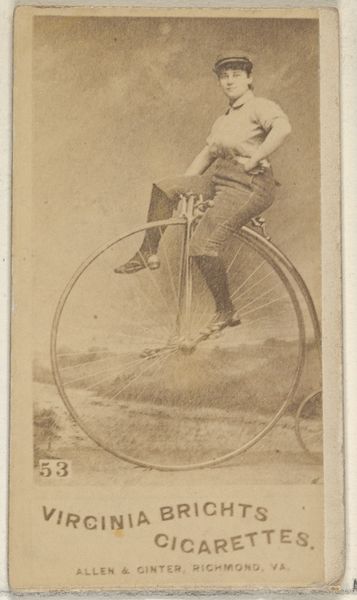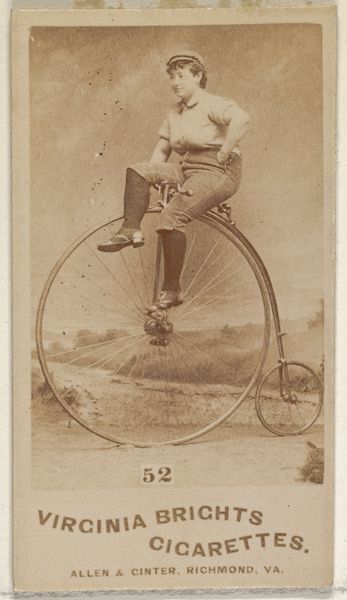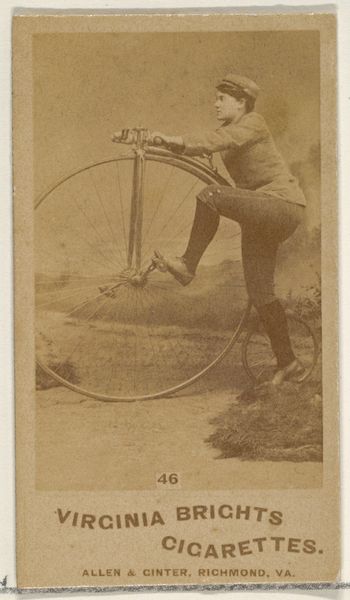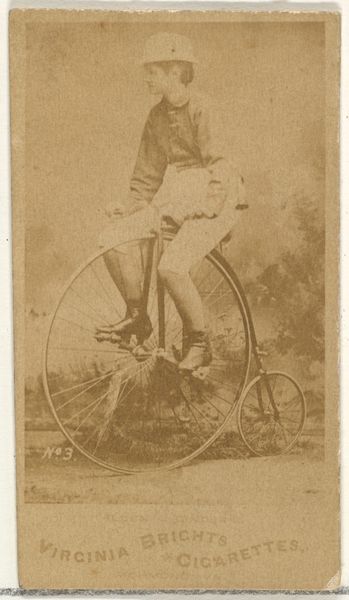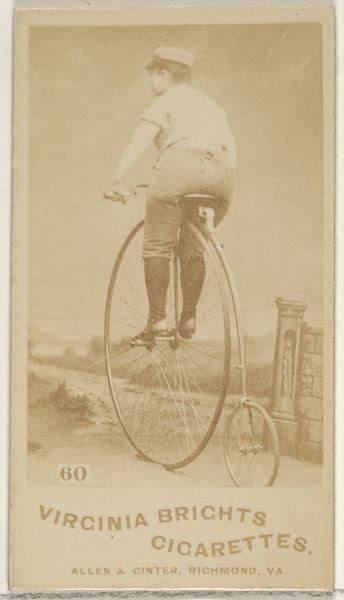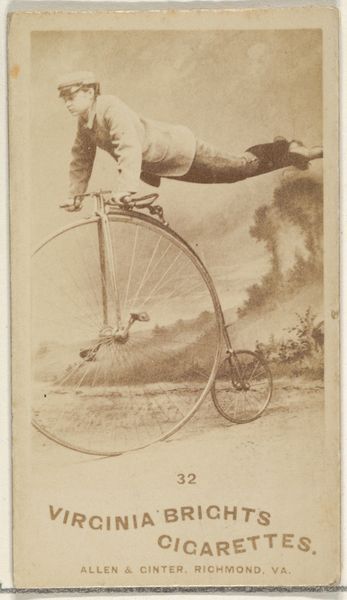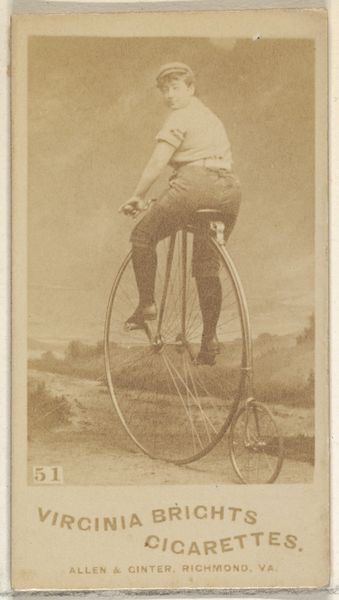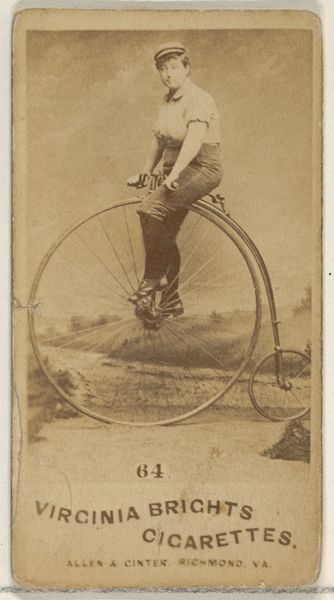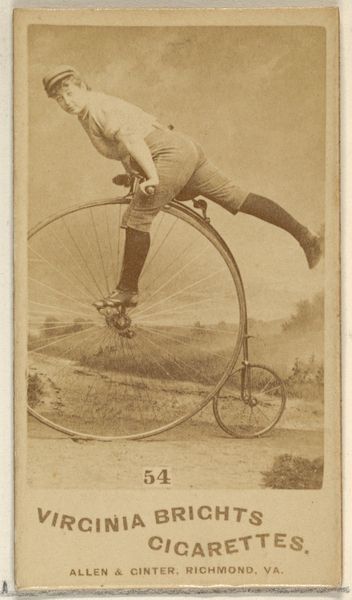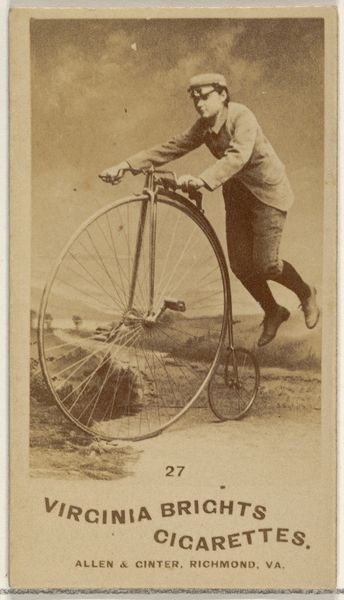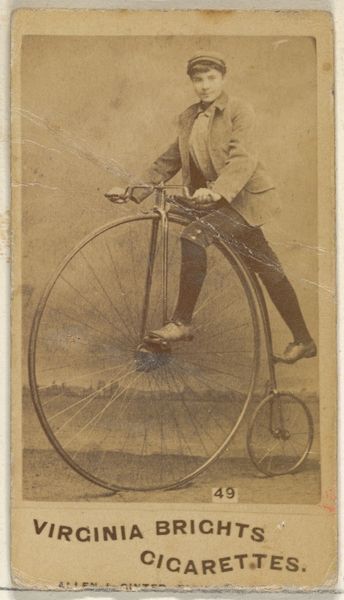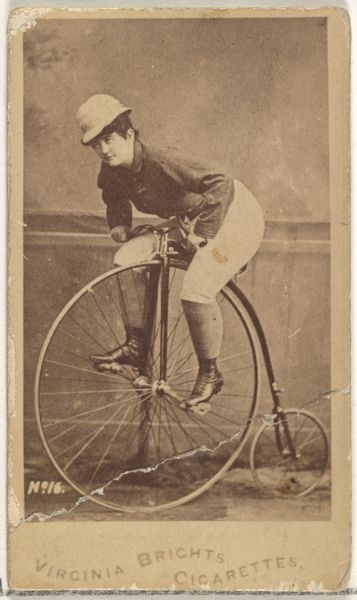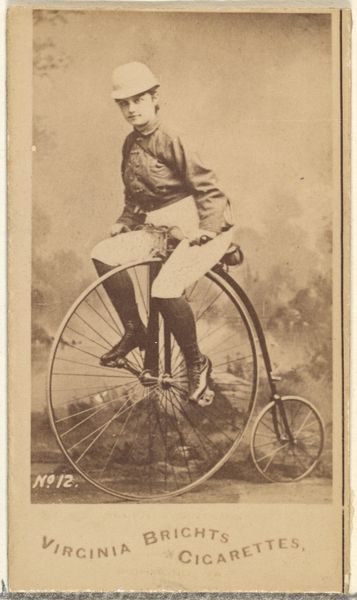
Card 61, from the Girl Cyclists series (N49) for Virginia Brights Cigarettes 1887
0:00
0:00
drawing, print, photography
#
portrait
#
drawing
# print
#
photography
#
men
#
genre-painting
Dimensions: Sheet: 2 3/4 x 1 3/8 in. (7 x 3.5 cm)
Copyright: Public Domain
Curator: Let's turn our attention to this fascinating little piece: "Card 61, from the Girl Cyclists series (N49) for Virginia Brights Cigarettes," created around 1887 by Allen & Ginter. Editor: My immediate impression is one of unexpected grit! The sepia tone and the subject matter combine to convey something powerful. Curator: Absolutely. These trade cards, produced to stiffen cigarette packs, weren't just ephemera. This one, like the others in the series, depicts women engaging in what was then seen as a quite radical activity: cycling. It's a staged photography, no doubt, but intended to signal modernity and the changing role of women. Editor: It's amazing how something so commercially driven could become such an interesting cultural artifact. You have to think about how this was mass-produced, printed probably using albumen or some similar photographic printing process, making the image quite robust for handling. The sheer volume tells us about consumption, not just of tobacco but of emerging visual culture. Curator: Precisely! And the cigarette company associating itself with these "new women" cyclists – they understood the cultural currents. The bicycle itself was a symbol of freedom and mobility. But to link that with cigarettes? It speaks volumes about the calculated role of visual imagery. Editor: I keep looking at the bicycle. Its engineering – the large front wheel!– it really emphasizes the materiality of the object itself. It tells a story of industrial production. I’m curious about the textiles involved in her attire, and how cycling was already influencing new, more practical garments. Curator: Excellent point! And to bring it back to the politics: consider who was being excluded from this picture of progress? Working-class women? Women of color? The image has a definite viewpoint. Editor: Indeed, the image is a powerful material record, reflecting progress, leisure, consumption... It also has inherent constraints tied to social structure of its time. Curator: A simple little piece, yet laden with historical significance, I dare say. Editor: Yes, makes you think about the multiple layers of manufacture. From tobacco fields to photograph prints and mass production! Amazing for its time.
Comments
No comments
Be the first to comment and join the conversation on the ultimate creative platform.
